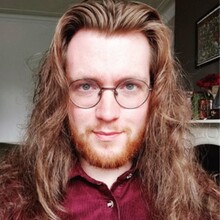-
Course begins March 6, 2026
-
Course includes weekly sessions with the instructor from 2:00 to 3:30pm Eastern U.S. time.
-
All sessions are recorded so you can watch them at your convenience
Session 1
‘Weapons of Perfect Length’: The Weapons of English Fight Books and Fencing Culture
This introductory session contextualizes the incredible variety of weaponry owned and used in England. Swords of all varieties and a wide range of staff weapons were used for war, self-defense, competition, play, and other purposes. By understanding what these weapons were and what they meant to those who wielded them, students of historical martial culture are much better placed to understand the themes explored in the rest of the course.
Session 2
‘So that every man maye rede it’: English Fencing Treatises
The first of two sessions examining a small but important group of English fencing treatises. We look at the personal and professional reasons behind why fencers decided to produce these works, who their audiences were, and finally how historical fencing masters attempted to overcome the problem of recording or transmitting an entirely physical art through text and image.
Session 3
‘In his fight natural English’?: The Techniques of Combat and the English Way of Fighting
Moving on from looking at the intellectual aspects of these manuscripts and printed works, this session examines the martial and technical aspects of these treatises. We cover the sorts of fighting that these texts document as well as the various techniques described by their authors. Consideration of these matters allows us to consider whether there was a historically English style of martial arts.

Session 4
Masters of Defence: Martial Instruction in Late Medieval and Early Modern England
From the art of fence to those who taught it, our attention now shifts to the ways in which fencing masters instructed others and how they – over time – became an increasingly organized and regulated group. We begin by looking at the role of fencing masters in late medieval trial by combat before shifting to a study of the first English ‘guild’ of fencers, the Masters of Defence, who rose to prominence during the reign of King Henry VIII.
Session 5
Legal and Literary Attitudes towards Fencers and Fencing
This session considers the legal and socio-cultural place of martial instruction in late medieval and early modern England, with a particular focus on contemporary critiques of fencers and their art. Although martial prowess was praiseworthy, many considered the ability of civilian fencers to be incompatible with the skills required for the defense of the realm. We will also examine how medieval and early modern literature present and critique the process of learning how to fight.
Session 6
The Masters of Defence Strike Back
Our final session looks at how the Masters of Defense attempted to control perceptions of their profession in light of the criticisms discussed in the previous session. So as to differentiate themselves from unlicensed and vagrant fencers, the Masters of Defense strived to act akin to guilds and livery companies. By examining various aspects of the organization such as the swearing of oaths, we can understand how the Masters of Defense sought to present themselves as expert regulators of martial knowledge.
Meet Your Instructor

Jacob H. Deacon
Dr Jacob H. Deacon is an expert on late medieval martial culture, with a particular interest in the practice of civilian violence. He graduated with a PhD in Medieval Studies from the University of Leeds in 2025, having previously read History at Cardiff University. He is an editor at Acta Periodica Duellatorum, the journal for historical martial arts studies, and previously worked as part of an international research network investigating a specific type of medieval tournament known as the pas d’armes. He has published peer-reviewed articles on late medieval arms and armed combat, written for BBC History Magazine’s website, and appeared on popular podcasts such as Not Just the Tudors.
